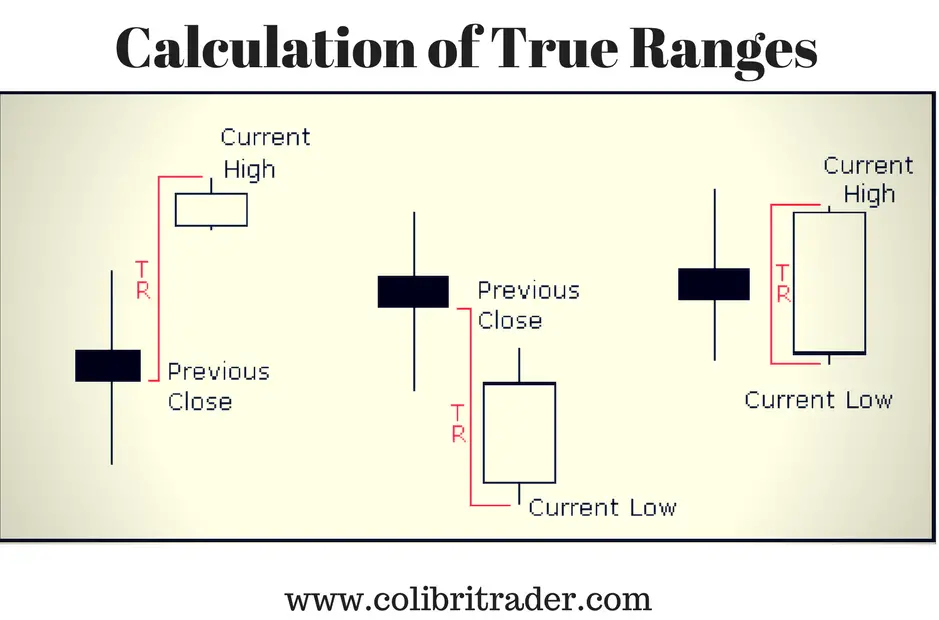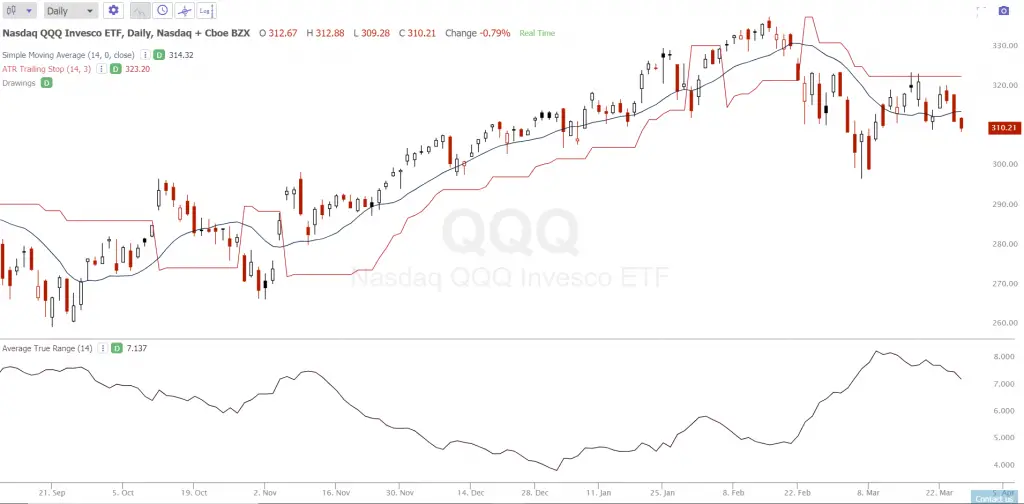What is ATR? The ATR indicator is the average true range technical indicator used in technical analysis to quantify the multi-day price range volatility on a chart. It is usually derived from the 14-day simple moving average of prices and the trading range and calculates the full trading range of price action.
Charts can have gaps in price both up and down also commodities and stock indexes can have moves stopped when a limit is reached in a session. A volatility formula to track a price range on a chart using only on the high and low of an intra-day trading range fails to capture volatility from both opening price gaps and limit moves. J. Welles Wilder created the Average True Range to quantify the “missing” volatility from the open to the close. The ATR is not a technical indicator of the direction of price action, only the volatility on the chart. He features the ATR indicator in his 1978 book, New Concepts in Technical Trading Systems.
The average true range technical reading is calculated with the daily price range change and uses the greatest of three possible readings: ‘high minus the previous close’, ‘previous close minus the low’ or the ‘high minus the low’.
Current ATR = [(Prior ATR x 13) + Current TR] / 14
– Multiply the previous 14-day ATR by 13.
– Add the most recent day’s TR value.
– Divide the total by 14

The average true range (ATR) can give you the multi-day range of price movement and help you position size based on your time frame and your charts volatility. If your entry is $103, your stop is the $100 price, and the ATR is $1, then you have a three days worth of movement against you as a stop as one example.
Start with your stop loss level and volatility to give yourself your position size. The more room you want on your stop determines how big of a position size you can take.
One type of trailing stop order uses the ATR indicator as a moving signal that expands as the trading range grows and contracts as the trading range gets smaller. This can also help to set position sizing based on the volatility risk of the current average true range.
For an ATR trailing stop the 14-day period average ATR is commonly used. A multiple of 3 is plotted with the ATR on the chart as a visual trailing stop to use for signaling in most cases. In the case of a long position the 3 ATR would be trailing below the price on the chart in the case of a short position the 3 ATR would be trailing above the price.

This would be a mechanical trailing stop order and is quantified taking away the psychological pressure of discretionary decision making about where to set an initial stop-loss at entry and where to exit a winning trade based on a trailing stop.
The ATR is a moving indicator and changes with the degree of volatility in price action. It will be wider range in highly volatile charts and tighter in less volatile charts. A 2 ATR trailing stop can be used in extremely volatile markets to lower the risk of the distance to the stop loss or trailing stop.
Using an ATR trailing stop starts at entry, if price gets lower than 3 ATRs away from your entry price you exit for a loss at that technical level. If your trade is a winner then you exit the winning trade when price reverses lower than 3 ATRs.
Using an ATR trailing stop is a type of trend following system that allows your winners to run and cuts your losses short while also giving room for a trade to work out without a premature exit.
The ATR trailing stop is a risk management tool and exit signal used after an entry signal is taken and not a signal to buy.
This is a mechanical way to manage your trade exits using the ATR indicator as a trailing stop order.